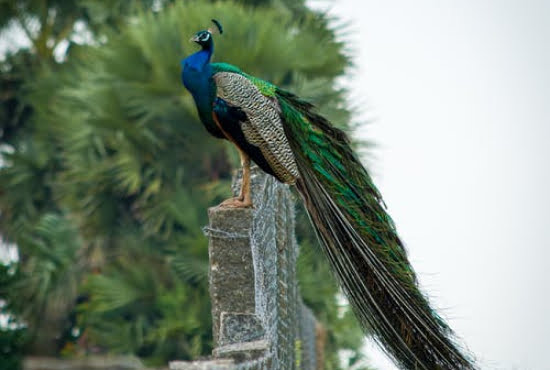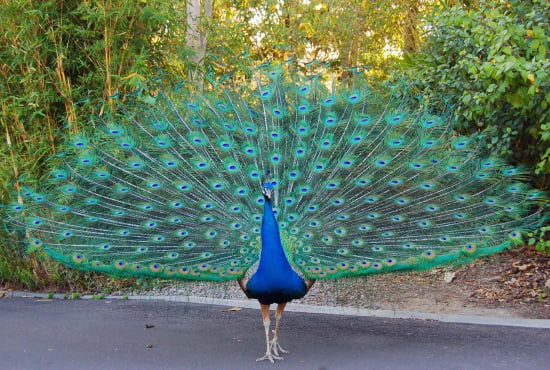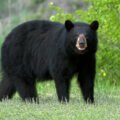Peacock Facts That Will Blow Your Mind
The peacock is one of the most colourful and amazing birds in the world, but did you know these facts about peacocks? Not only will you be amazed, but you’ll get all of your peacock facts, too! From its unusual mating rituals to the fact that it’s more closely related to pheasants than true peafowl, keep reading to learn more about peacocks.
Types of Peacocks
The most common species of peacocks is the Javan peacock (also known as blue peafowl) which is native to Java, Bali, and Borneo. Some notable differences between males and females include that male have iridescent feathers and display a train during mating season. Female peacocks have brown feathers with white patches on their wings and are smaller than males.
The second species is the Indian Peafowl (Pavo cristatus), which has more vibrant colours than other types of peacocks. Females in this species are smaller than males, with dull brown feathers and white facial markings instead of a train during mating season.

Interesting Behaviour
Peacocks are some of the most conspicuous birds in India. The male, or peacock, is instantly recognizable with its magnificent tail made up of eye-catching blue, green, and purple feathers. The female peafowl is a brown bird that closely resembles a pheasant. Peafowl is not part of either family but belongs to their unique genus, Pavo. Peafowl is famously known for their courtship rituals where males display their massive train to females to woo them.
But did you know that peacocks exhibit many more interesting behaviours? Some might even surprise you! Keep reading as I share seven more fascinating facts about these beautiful birds that range from how they come into being and how they defend themselves to what they do when they feel threatened… even though it’s usually too late at that point. So, grab your binoculars and get ready to take notes because here are seven pretty awesome (and surprising) facts about peacocks you probably didn’t know!

Physical Characteristics
Male peafowl is known for their striking, iridescent tail feathers. These birds reach 3 feet in height and can weigh between 6 and 8 pounds. The females of their species are usually a dull brown and spend more time foraging for food than males do. They have an average lifespan of 10 years in captivity but tend to live 15-20 years in their natural habitat.
Their beaks curve slightly downward with black skin and yellow eyes. Their heads have tufts on top that they raise when they’re startled or excited. Peafowl lives primarily in grasslands—they’re most abundant where human activity is limited. They lay their eggs in nests made from twigs or reeds hidden deep within forests or tall grasses.

Incredible Facts
- Only Males Have Those Long, Beautiful Feathers.
- Peacocks Take Three Years to Grow Their Tail Feathers.
- The Indian Peacock Is the Country’s National Bird.
- Peacock Tail Feathers Are Shed Regularly.
- That Dramatic Plumage Is Designed to Attract Peahens.
- They can live up to 30 years. – They have been used in Chinese medicine for over 4000 years.
- Peacocks are very territorial animals, especially during mating season.
The female peafowl is called a peahen and looks different from her male counterpart with no iridescent feathers on her neck and back.
Males are polygamous, meaning they will mate with multiple females during their breeding seasons.
When it comes time to procreate these beautiful birds will call out loud noises which can be heard a mile away by other peacocks that may be looking for mates of their own.
Once another peacock responds they will meet up and slowly court each other until eventually, they mate. Because of their large size coupled with their loud calls, it’s difficult for predators such as tigers or humans to sneak upon them.

